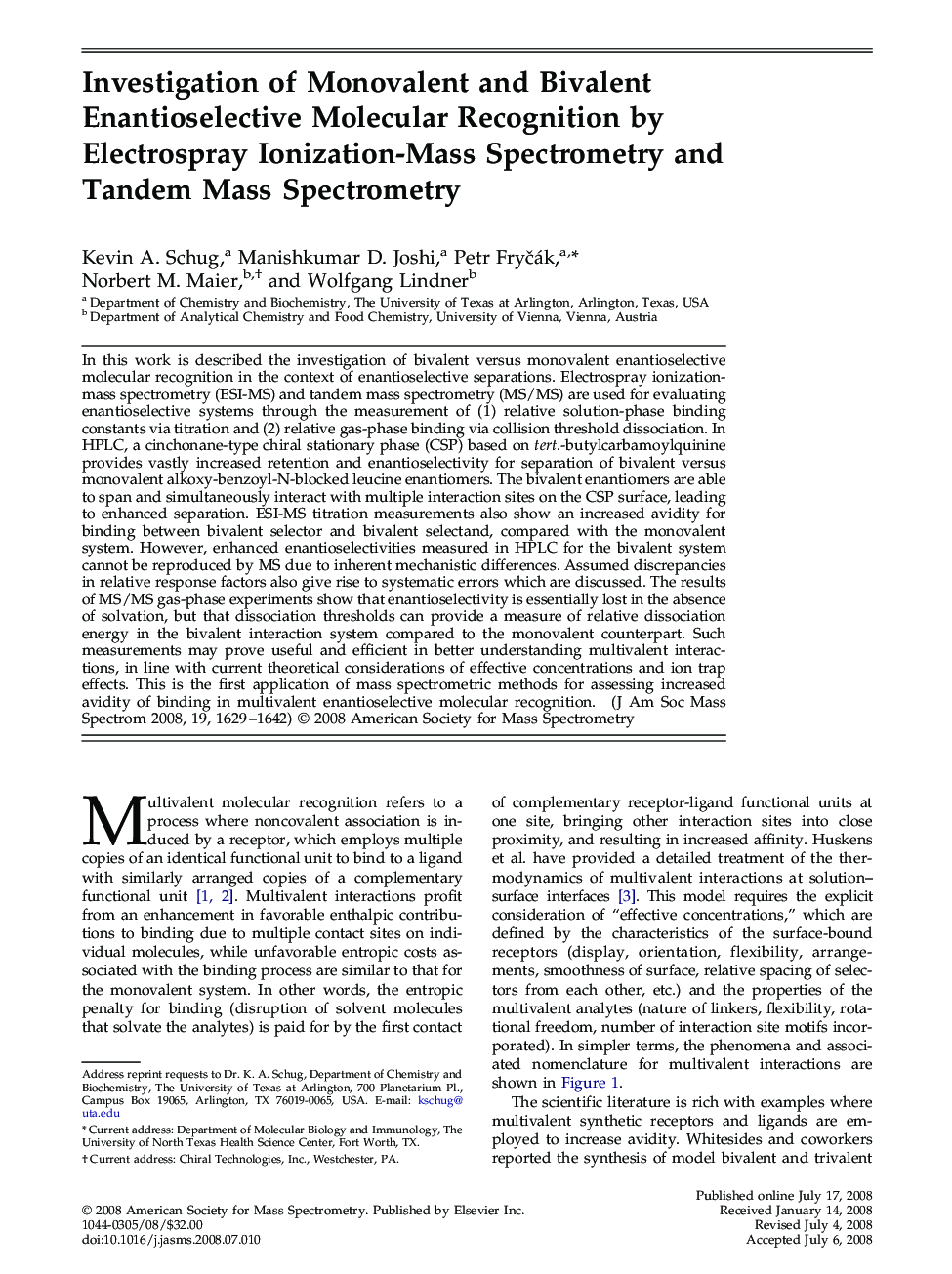| کد مقاله | کد نشریه | سال انتشار | مقاله انگلیسی | نسخه تمام متن |
|---|---|---|---|---|
| 1195836 | 964416 | 2008 | 14 صفحه PDF | دانلود رایگان |

In this work is described the investigation of bivalent versus monovalent enantioselective molecular recognition in the context of enantioselective separations. Electrospray ionization-mass spectrometry (ESI-MS) and tandem mass spectrometry (MS/MS) are used for evaluating enantioselective systems through the measurement of (1) relative solution-phase binding constants via titration and (2) relative gas-phase binding via collision threshold dissociation. In HPLC, a cinchonane-type chiral stationary phase (CSP) based on tert.-butylcarbamoylquinine provides vastly increased retention and enantioselectivity for separation of bivalent versus monovalent alkoxy-benzoyl-N-blocked leucine enantiomers. The bivalent enantiomers are able to span and simultaneously interact with multiple interaction sites on the CSP surface, leading to enhanced separation. ESI-MS titration measurements also show an increased avidity for binding between bivalent selector and bivalent selectand, compared with the monovalent system. However, enhanced enantioselectivities measured in HPLC for the bivalent system cannot be reproduced by MS due to inherent mechanistic differences. Assumed discrepancies in relative response factors also give rise to systematic errors which are discussed. The results of MS/MS gas-phase experiments show that enantioselectivity is essentially lost in the absence of solvation, but that dissociation thresholds can provide a measure of relative dissociation energy in the bivalent interaction system compared to the monovalent counterpart. Such measurements may prove useful and efficient in better understanding multivalent interactions, in line with current theoretical considerations of effective concentrations and ion trap effects. This is the first application of mass spectrometric methods for assessing increased avidity of binding in multivalent enantioselective molecular recognition.
Graphical AbstractMultivalent (mono- and bivalent) enantioselective interactions are studied by HPLC, ESI-MS titrations, and MS/MS collision threshold dissociation to investigate empirical correlation between the methods.Figure optionsDownload high-quality image (88 K)Download as PowerPoint slide
Journal: Journal of the American Society for Mass Spectrometry - Volume 19, Issue 11, November 2008, Pages 1629–1642